
Glitter, glue and physics too
Explore physics in a new way by creating a model of particle collisions using craft…

Meet antimatter – nature’s invisible twin that could explain our existence and inspire our wildest stories.
Whether you are a scientist, a sci-fi fan, or just a random passerby on the street, antimatter has a way of capturing everyone’s imagination and curiosity, regardless of how much or how little you know about it. Antimatter is one of those mysterious ideas that makes people stop and wonder. Before we dive into the five fascinating things that matter about antimatter, let’s first learn what antimatter is.
As you probably already know, matter is made of particles like protons, neutrons, and electrons. Similarly, antimatter is made up of their opposites – anti-particles that differ from particles in their magnetic or electric properties (figure 1).[1,2]
But when we talk about antimatter at CERN, the world’s largest particle physics lab, we are actually talking about anti-atoms. So, when you hear people say, “Antimatter is only made at CERN”, they mean that, as of now, the creation of anti-atoms only happens at CERN in the so-called Antimatter Factory.
Individual anti-particles, on the other hand, can be (naturally) created on Earth and even in our own bodies! Here is a fun example: the anti-particle counterpart of an electron is – you guessed it! – an anti-electron. An anti-electron, called a positron, has the same properties as an electron, but it carries a positive charge instead of a negative one. They can be naturally created when a radioactive isotope called potassium-40 decays.[3]
Yes! One of the most famous examples of an anti-electron source is a banana. Bananas contain the above-mentioned isotope, and roughly every 75 minutes, a banana produces one anti-electron. This is where things get personal: your body also contains potassium-40, meaning you generate around 4000 anti-particles every single day! That is not exactly enough to conduct experiments at CERN or power a spaceship, but still… pretty cool. 😎
Now that you have mastered the antimatter basics, you are more than ready for what you came here for: the five reasons why antimatter matters. Feel free to jump to whichever reason you are most curious about. However, if you read all five, you will earn an imaginary bonus of 4 000 extra anti-particles for the next 137 days. According to my totally made-up book, this officially makes you extra cool.
According to everything we know as of now, when the Big Bang occurred, equal amounts of matter and antimatter should have been created. But here is the catch: when matter and antimatter interact, they annihilate each other. Annihilation means a total transformation into energy (figure 2). Based on that logic, the universe should be empty. No planets, no stars, no you, no me…nothing.
And yet, here we are.
Not only do we exist, but everything in the universe is predominantly made of matter. The imbalance between matter and antimatter is one of the biggest mysteries in physics, and we can’t help but ask: what happened?
The honest answer? We don’t know. Scientists have some ideas, promising leads, and a growing number of experiments, but no definitive answers. At least, not yet.
At CERN, scientists are working around the clock to uncover the reason why matter won in the battle between matter and antimatter. Each experiment takes a different approach, but they all have the same goal: to find any differences between matter and antimatter, particles and anti-particles that might shed light on what happened at the beginning of the universe. In short, antimatter physicists are trying to answer a deceptively simple question: How do we exist?
To dive into the latest experiments and discoveries in this quest, check out the ongoing research at CERN.
Studying antimatter comes with a major challenge: how can you trap antimatter to study it when it instantly annihilates the moment it touches matter, and matter is literally everywhere?
Let’s first have a look at the simplest anti-atom: anti-hydrogen. It is made up of two anti-particles, an anti-proton and an anti-electron (figure 1).[2] To make them safely, physicists use electric and magnetic fields inside an ultra-high vacuum, ensuring that anti-particles never touch ordinary matter. Only after the two anti-particles are isolated, scientists can combine them to form anti-hydrogen atoms. If you are curious to see how it happens, check out how the ALPHA (Anti-hydrogen Laser Physics Apparatus) experiment does it by following this link.
But the real challenge starts once anti-hydrogen is made. Being electrically neutral, we cannot trap it using electric fields. Instead, we must take advantage of the magnetic properties of the anti-hydrogen, such as its magnetic dipole moment, by using strong magnetic fields.
Sounds simple on paper, right? In reality, it’s incredibly tricky. And here is the most mind-bending part: antimatter physicists cannot even be sure they have successfully trapped the anti-hydrogen until they let it go. When they turn the magnets off, the trapped antimatter meets matter and annihilates, creating the telltale signs that confirm we had actually captured it in the first place.
When it comes to antimatter, the biggest real-world impact is probably medicine. Throughout this article, two anti-particles were mentioned – anti–protons and anti-electrons (positrons), and they play a starring role in healthcare.
Positron emission tomography (PET)[4] is a functional imaging technique that uses the annihilation of matter and anti-particles.
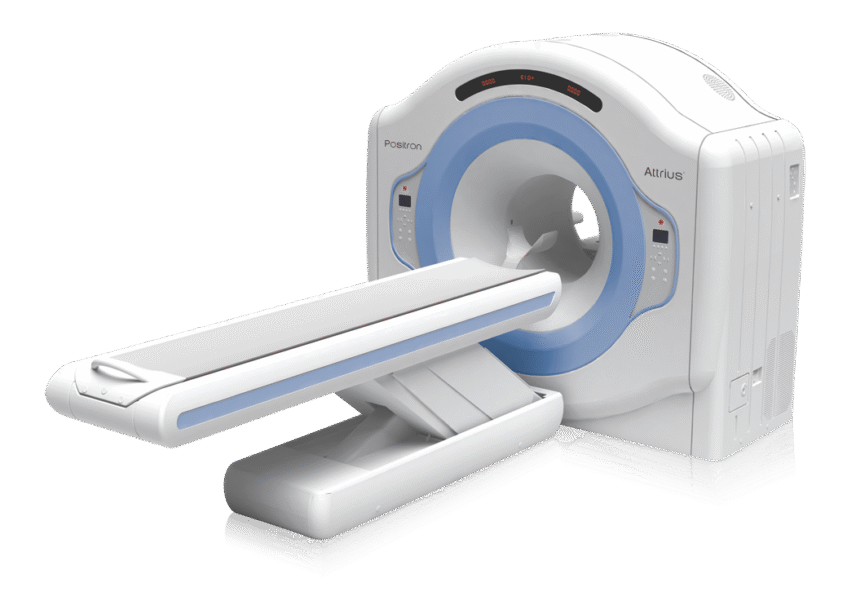
A radioactive tracer is injected into the body — don’t worry, this is a safe procedure — and accumulates in certain areas. The radioisotope then undergoes beta decay, emitting a positron which immediately annihilates with a surrounding electron, releasing a photon. These photons can be detected outside of the patient’s body and help create 3D images of metabolic processes in the body.
PET scanners are very useful in oncology (e.g., to detect cancer[5]), neurology (e.g., to diagnose conditions like Alzheimer’s disease[6]) and cardiology (e.g., to assess heart function[7]).
While anti-electrons are used to detect cancer, anti-protons could be used to treat cancer. Proton therapy is already more efficient in treating cancer than conventional radiation therapy since it targets the cancer cells more precisely and thereby largely spares healthy tissue. It is especially effective for difficult-to-treat neck and head tumours.[8,9] However, researchers at CERN have shown that anti-protons could do the same job even better: damaging the tumour cells with a four times lower particle dose compared to proton therapy, which in turn means that the radiation dose can be much smaller and thus safer with even less damage to healthy cells.[10,11]
The catch? Building facilities to produce anti-protons is super expensive, and clinical trials take years. So, while anti-proton therapy shows promise, it is still some way from being used in cancer treatment.
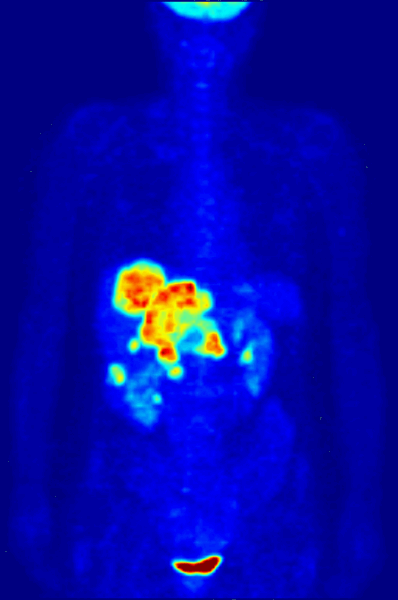
If you thought antimatter research is limited to cool physics labs on Earth, think again. There is actually a particle detector above us, mounted on the International Space Station.[12,13] It is called the Alpha Magnetic Spectrometer (AMS), and it is essentially an awesome cosmic-ray detective that is trying to figure out where antimatter is and find all different types and amounts of particles that constantly move through our solar system from deep space. Basically, space itself is a natural ‘antimatter factory’ that helps us piece together the story of how our universe works.
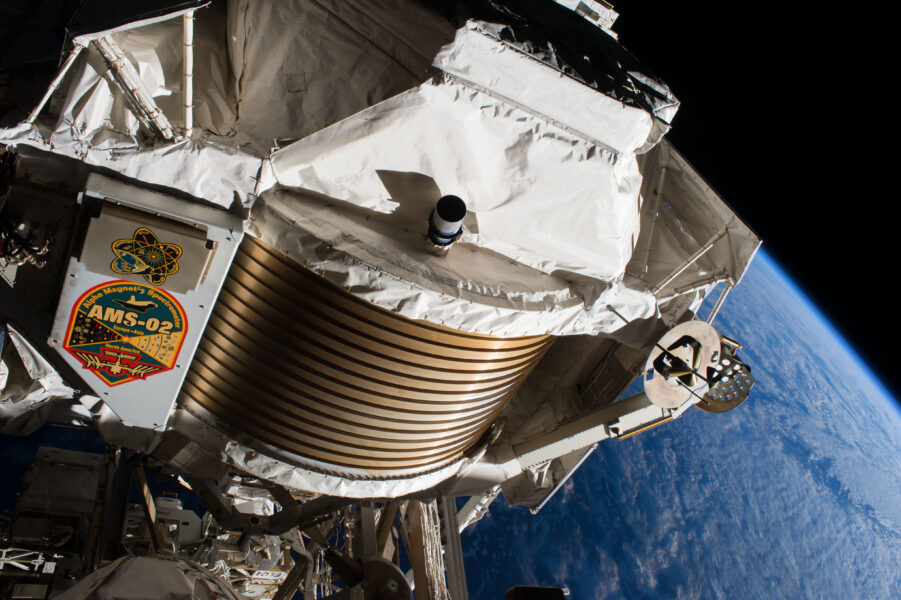
In this article, matter-antimatter annihilation was mentioned several times, but here is the part that might blow your mind (pun very much intended 😄): when this type of annihilation happens, a huge amount of energy is generated. To put things into perspective: if you had just 1 g of antimatter and 1 g of matter, the explosion would unleash roughly three times the energy of the Hiroshima bomb!
In theory, this is a highly efficient energy source, and naturally, science fiction writers ran wild with it, turning antimatter into the ultimate power source, starship fuel, or end-of-the-world weapon.
The two most iconic examples include:
In real life, this is spectacularly impractical. Producing antimatter is so costly and slow that, at the current rate, it would take CERN billions of years to make 1 g of antimatter. At the moment, we produce about 0.000000001 g of antimatter per year, which is nowhere near enough to create a bomb or use antimatter as fuel.
Thus, antimatter bombs and starship engines remain safely in the realm of science fiction. Still, it is a fantastic and fun thought experiment and, in my very biased opinion, the real experiments happening at CERN’s Antimatter Factory are even more exciting! 😊
Now, if this sparked your curiosity and you are interested in reading more about a specific topic in the antimatter field, let us know. We will happily take you further down the antimatter rabbit hole.
[1] Paul Dirac’s Nobel Lecture on the theory of electrons and positrons: https://www.nobelprize.org/uploads/2018/06/dirac-lecture.pdf
[2] Information on the ALPHA experiment at CERN: https://alpha.web.cern.ch/
[3] Engelkemeir DW, Flynn KF, Glendenin LE (1962) Positron emission in the decay of K40. Physical Review 126. doi: 10.1103/PhysRev.126.1818
[4] Humm JL, Rosenfeld A, Del Guerra A (2003) From PET detectors to PET scanners. European journal of nuclear medicine and molecular imaging 30: 1574–1597. doi: 10.1007/s00259-003-1266-2
[5] Jerusalem G et al. (2003) PET scan imaging in oncology. European journal of cancer 39: 1525-1534. doi: 10.1016/s0959-8049(03)00374-5
[6] Sarikaya I (2015) PET imaging in neurology: Alzheimer’s and Parkinson’s diseases. Nuclear Medicine Communications 36: 775–781.doi: 10.1097/MNM.0000000000000320
[7] Slomka P et al. (2014) The role of PET quantification in cardiovascular imaging. Clinical and translational imaging 2: 343–358. doi: 10.1007/s40336-014-0070-2
[8] Dinesh Mayani D (2011) Proton therapy for cancer treatment. Journal of Oncology Pharmacy Practice 17: 186–190. doi: 10.1177/1078155210375858
[9] Kim JK et al. (2018) Proton therapy for head and neck cancer. Current treatment options in oncology 19. doi: 10.1007/s11864-018-0546-9
[10] Bassler N et al. (2008) Antiproton radiotherapy. Radiotherapy and Oncology 86: 14-19. doi: 10.1016/j.radonc.2007.11.028
[11] Stegeby H (2018). Overview of antiproton affinities for functional groups relevant in particle‐beam cancer therapy. Cancer Reports 1: e1128. doi: 10.1002/cnr2.1128
[12] Kounine A (2012) The alpha magnetic spectrometer on the international space station. International Journal of Modern Physics E 21: 1230005. doi: 10.1142/S0218301312300056
[13] Alpat B (1996) AMS (Alpha Magnetic Spectrometer) experiment for antimatter, dark matter search on International Space Station Alpha. Nuclear science and techniques 14: 182–192.
Whether you’re completely new to antimatter or if you already heard about it, this article takes you on an entertaining, educational journey starting with the antimatter basics, calling at the production of and research on antimatter and terminating at science-fiction. The article offers numerous points to dive deeper into the fascinating yet not overly complex antimatter research. A highlight of this article are the medical applications which make a nice teaching opportunity also outside Physics classes and even for students that would otherwise not be interested in this topic. The connection to movies and science-fiction also allow for the creation of a rather relaxed teaching unit towards the end of a school term.
Tobias Patrick Treczoks, CERN, Switzerland/France

Explore physics in a new way by creating a model of particle collisions using craft…
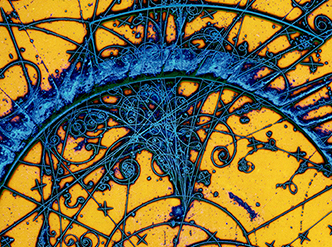
Identify tracks of subatomic particles from their ‘signatures’ in bubble chamber photos – a key 20th century technology for studying particle…
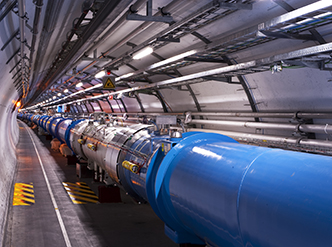
The world’s largest particle accelerator, the LHC, is deepening our understanding of what happened just after the Big Bang. Here’s how to explore…